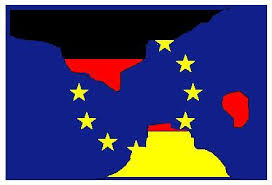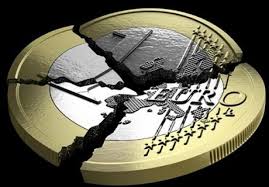The Eurozone is an economic and monetary union, which consists of 19 countries within the European Union, which in itself is a confederation of 28 nations primarily from Europe, forming an economic union.
The countries of the Eurozone (euro area) use a common currency called the Euro and share a common independent monetary policy which is presided over by the European Central Bank.
Germany which had been suffering from the after-effects of the reunification which included huge public deficits owing to an expansionary fiscal policy and rapid increases in wage levels leading to loss of competitiveness in the export market, current account deficits and high unemployment, has bounced back, -partly because of its membership with the Eurozone- as country resilient to the current crisis.
- Europe’s largest economy is the biggest winner from the Euro, giving it an incentive to be a part of the bailout packages given to. As an exporting nation, Germany has particularly benefited from the euro. A trade surplus drove almost 60 percent of GDP growth from 2000 to 2009 according to a Mckinsy report. Back in 2010 the growth mix was still about 30% to 70%, with the domestic side contributing 70%.
| Year | 2000 | 01 | 02 | 03 | 04 | 05 | 06 | 07 | 08 | 09 |
| Net exports* | 34 | 77 | 50 | 57 | 93 | 100 | 32 | 60 | 16 | 67 |
*Contribution of net exports to change in GDP (%)
- About 40 percent of its exports are destined for the Eurozone and 20 percent for the rest of the European Union.
- Nearly three million jobs in Germany depend on exports to the Euro zone while 4.4 million depend on exports to the EU as a whole, according to a study by the Prognos research institute.
- Southern Euro zone countries(France, Italy, Spain, Greece and Portugal), traditionally more prone to inflation, have enjoyed better credit conditions due to a single interest rate fixed by the European Central Bank, encouraging them to buy German goods. Here’s an example of Greece (worst affected country in the debt crisis) enjoying lower interest rates from the euro.
| Year | 93 | 94 | 95 | 96 | 97 | 98 | 99 | 00 | 01 | 02 | 03 | 04 |
| RIR* | 12.1 | 12.3 | 14.6 | 12.1 | 12.7 | 11.4 | 12.7 | 11.6 | 8.6 | 5.3 | 3.9 | 2.8 |
*Real interest rate in Greece.
- If it had its own currency, Germany’s economy would probably also be struggling with an exchange rate far higher than the euro’s now, which would have made its exports costlier.
Click here for government certification in Accounting, Banking & Finance





4 Comments. Leave new
Splendid work
Good work..
Well researched 😀
The content as well as the presentation 😀
I have read another eurozone article 😀 but this one was much bette compaired to that
😀
GOod Work 😀 Keep it up 😀
great work